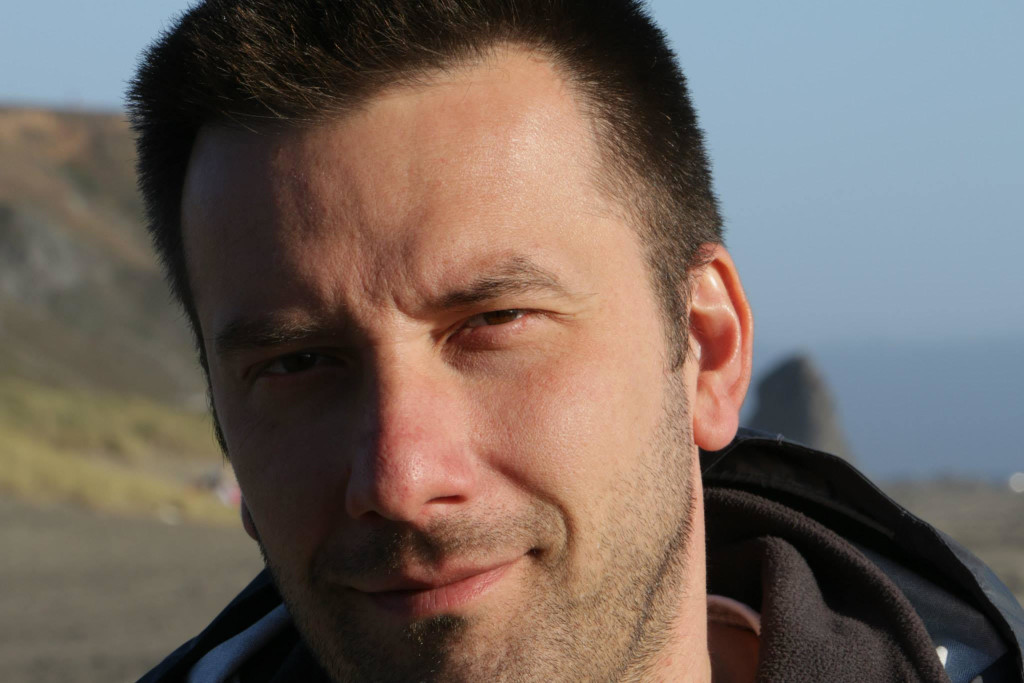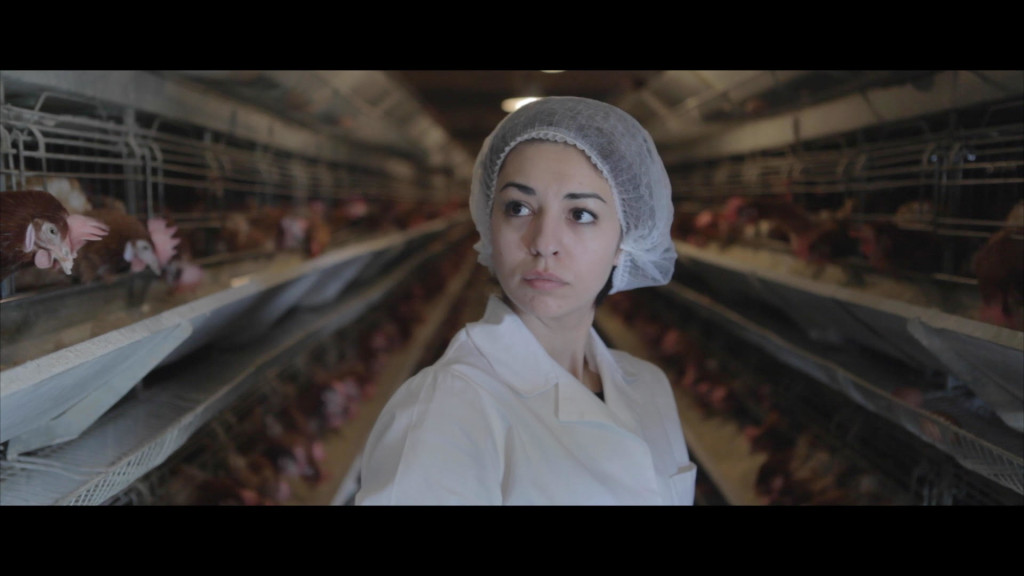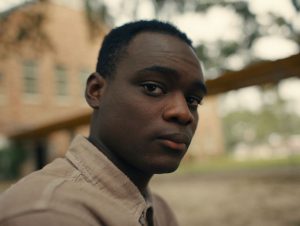Reviews include A Complete Unknown, The Brutalist, and Babygirl.
Interview: Student Film Winner Vlado Paskaljevic
January 7, 2016
This year’s winner of the TFCA’s Manulife Student Film prize is Vlado Paskaljevic, who enrolled at York University a decade after beginning his career as a filmmaker in his native Belgrade. His York thesis film Absence is Present dramatizes the difficulties of moving from one culture to another; it tells the story of a young Serbian woman working menial jobs in Toronto while, back home, her mother copes with a mysterious illness. The plot hinges on the whereabouts of a lost dog, which becomes a potent symbol of loss and marginality: a brief scene shot in a kennel in Belgrade quietly assumes a sociological dimension. Paskaljevic’s tough, realistic style suggests a familiarity with contemporary European art cinema. The themes of distance and dislocation, meanwhile, remain staunchly universal even as they’re deftly placed in a Canadian context, and connect his work to the films of young directors like Igor Drljaca, Albert Shin, Luo Li and last year’s student film prize winner, Eui Yong Zong. (That these are all York grads may or may not be a coincidence).

You teach on the East Coast. Can you tell me a little bit about your current teaching situation, and your background before coming to York?
I was hired this summer as a part time instructor to teach Digital Production at UNB in Fredericton and my contract will end after Winter Term. The Atlantic Provinces are very interesting and there are a lot of people there who are enthusiastic about filmmaking, especially the people from the New Brunswick Film Co-op. Before that, I did my undergrad studies in Film Directing – a long time ago. I got my BFA back in 2000 in Belgrade. As the political and financial situation in Belgrade was always unstable, my career was staggering; I worked in local television and did some work as an editor’s assistant for films. Interestingly, I won my first critics’ special mention (FIPRESCI) when I was an undergrad student for the film Dolphins Are Mammals (1997) at the Montreal World FIlm Festival. After that, I needed ten years to make my first film, Devil’s Town (2009), which premiered at Karlovy Vary. I moved from Belgrade to Toronto three years ago and I think that I’ve found a new home here.
Can you talk about your time at York? Was anybody especially instrumental in the making of Absence is Present?
I come from one very traditional kind of film school and I wanted to explore some new stuff: documentary/fiction/experimental hybrids and long take cinema. I heard from York alumnuses Igor Drljaca and Nico Pereda about the program, and then I applied and enrolled it. Professor Tereza Barta was very supportive as my supervisor. York’s program is very interesting because of its diversity – students are from all around the globe, and the professors range from mainstream to documentary or experimental filmmakers. I think that the exchange of such diverse ideas is key for any art school.
Where did the story of Absence is Present come from? Was it inspired by a particular event or a person that you know?
Almost entire my generation moved [from Serbia] because things didn’t change over the last 25 years. A lot of them moved to Canada. That’s sort of my story too. When I moved to Canada I was paranoid about something happening to my dog. I couldn’t take her to Canada, because she’s too old to travel and change her environment. And I think she’s pretty happy with my mother, who insisted on keeping her.
How did you cast the film?
When it comes to the casting I have my own system of beliefs: you have to know as many actors as possible, to watch their films, to go to their theatre performances. When they get a chance to work on a role with the director, they can show their real abilities. It’s totally different when they enter the casting room: they stay for five minutes, they recite what they prepared and they go. In this case I knew all the actors that I had chosen for this film, except few of them – because I still didn’t know any Torontonian actors. So I let my intuition guide me in that case.
Absence is Present is shot in two locations: can you talk about the logistics of filming in Toronto and Belgrade?
It was truly complicated for a zero budget film, so I decided to keep it simple. I prepared the Belgrade shoot for three months and filmed for five days and then the same with Toronto. All in all, it took six months, which is enough for a short film. I had to cast the actors in Belgrade long before I went there, but I knew them all because I’d worked on a few fiction films as a casting direction in Serbia and Croatia. So actually this film was not a typical student production, because of all my previous experience.

The film tells a story about distance, which gets collapsed and emphasized at the same time through the usage of Skype. Can you talk about the storytelling device of the video chats, and if you think this technology – which lets you see the other person – has made things easier or harder for people who’ve left home?
I took a course in stereoscopic 3D at York, which was the only such course in North America. My first idea was to shoot the whole film in S3D. In that case the only 2D images would be Skype conversations. But I gave up, due to budget limitations. The idea was to emphasize that moment of virtual communication, which is often just a substitution for real communication. All our lives have moved “online” and I think that the alienation and our depending on technology is interesting topic for the screen.
I thought briefly of Kelly Reichardt’s Wendy and Lucy while watching your film — not just the idea of a lost dog, but also of the dog as a stand-in for a larger social/economic reality. Were there any films or filmmakers who served as guiding influences on this film, or on your work in general?
Dogs usually stand in the storytelling for stable family and someone who is the best and loyal friend. Actually, when I moved to Canada, one night I had a nightmare that my dog is lost. That’s how it started.
Your contemporaries from York – Nico Pereda, Albert Shin, Igor Drljaca, Luo Li – what they seem to have in common is that they’re changing the idea of what a “Canadian” movie looks like in terms of representation (and in some cases, aesthetics). Do you feel like there’s something larger going on – at York, or in the demographics of a city like Toronto – that accounts for a shift in Canadian filmmaking? Do you think that your work is a part of it, in some way?
York encourages its students to experiment and find their own cinematic language. Some films are successful and some fail. But you cannot rise if you don’t fall, and that’s all part of process. I made quite a few horrible films at York. I’m not an exception. I was searching and exploring within myself and something crystalized through the process and I made this thesis film and I’m happy with it. I don’t think that other directors had an idea of defining what’s Canadian when they were making films. But it somehow happened – because they made what they wanted and they are all different and diverse – which is very Canadian or Torontonian thing today and that’s why we all love Canada.
Since you’ve been given this award by a group of film critics, I’m curious: are you interested to read assessments of your work going forward? Is it something you’re looking forward to or dreading as your career continues?
I am absolutely interested to read the assessments of my work. There are always things that we, the filmmakers, are not aware of.



